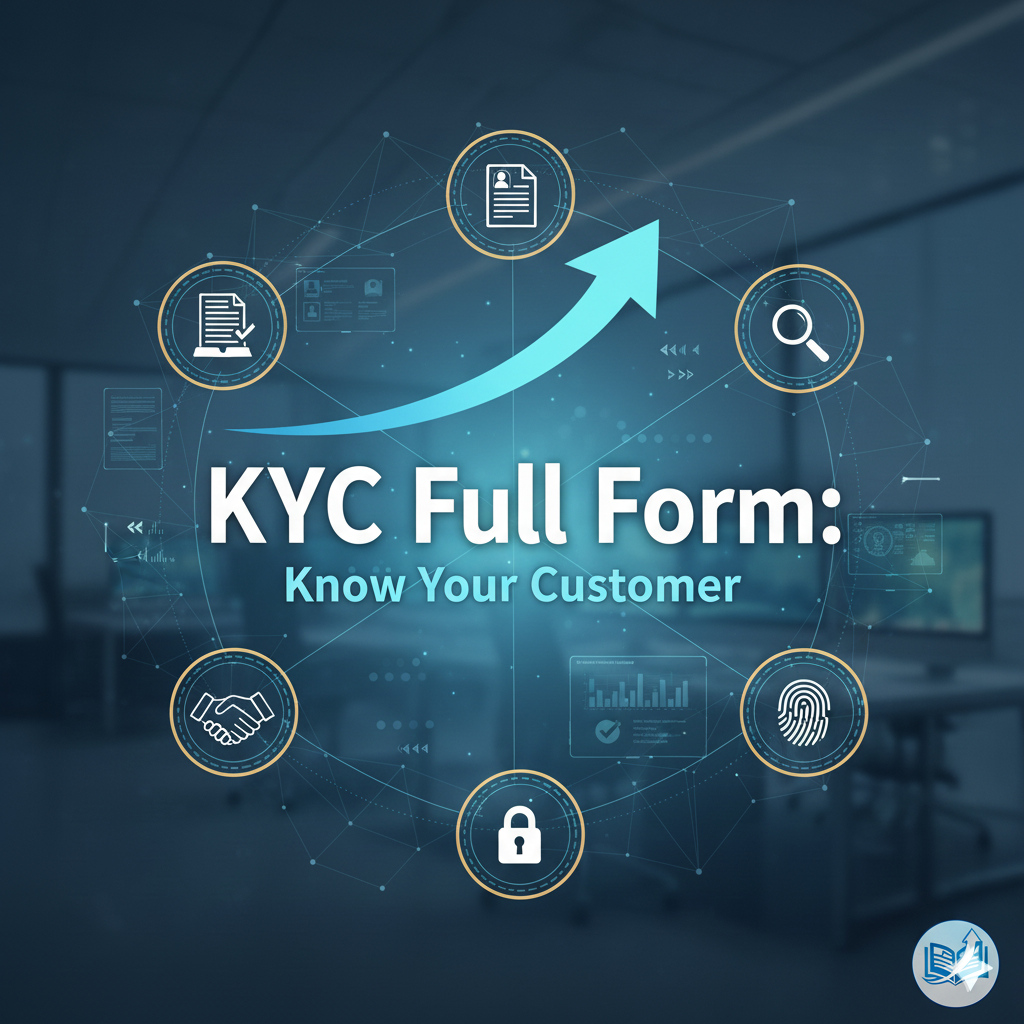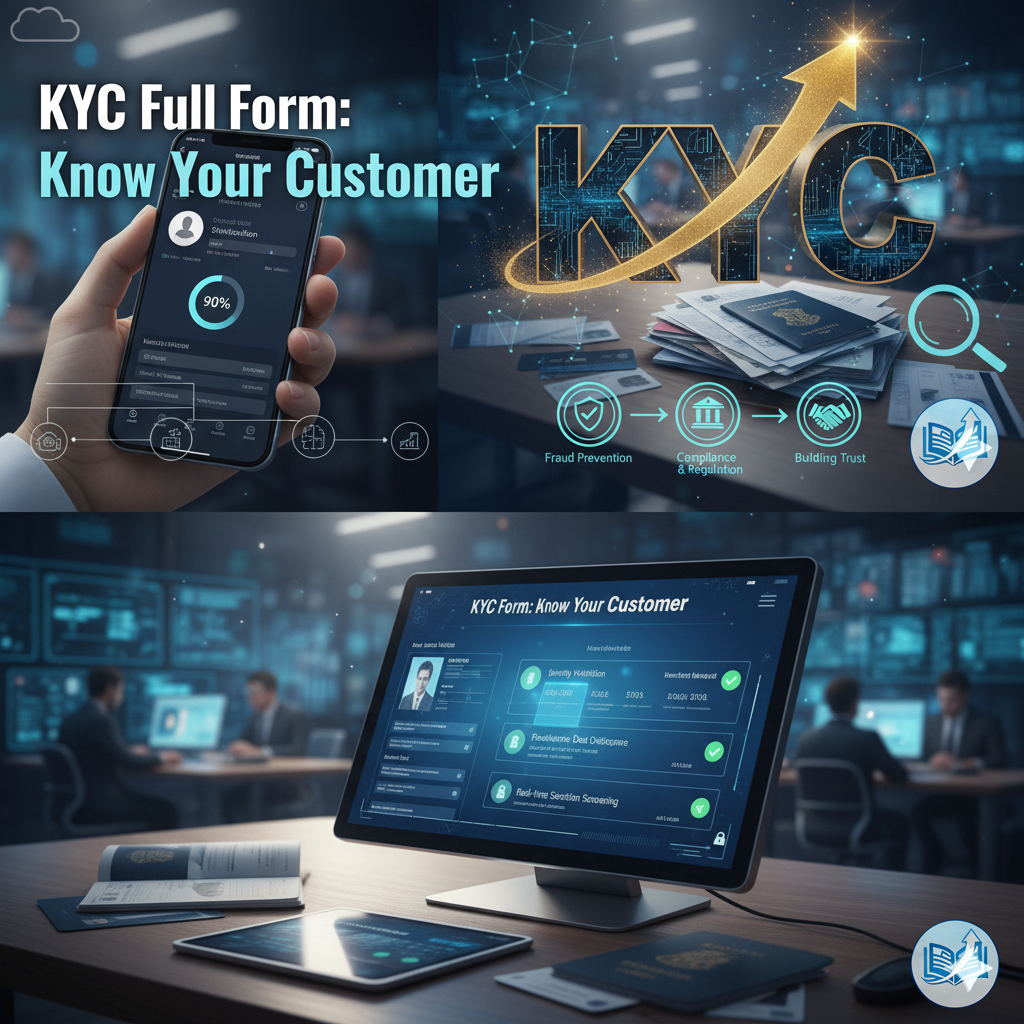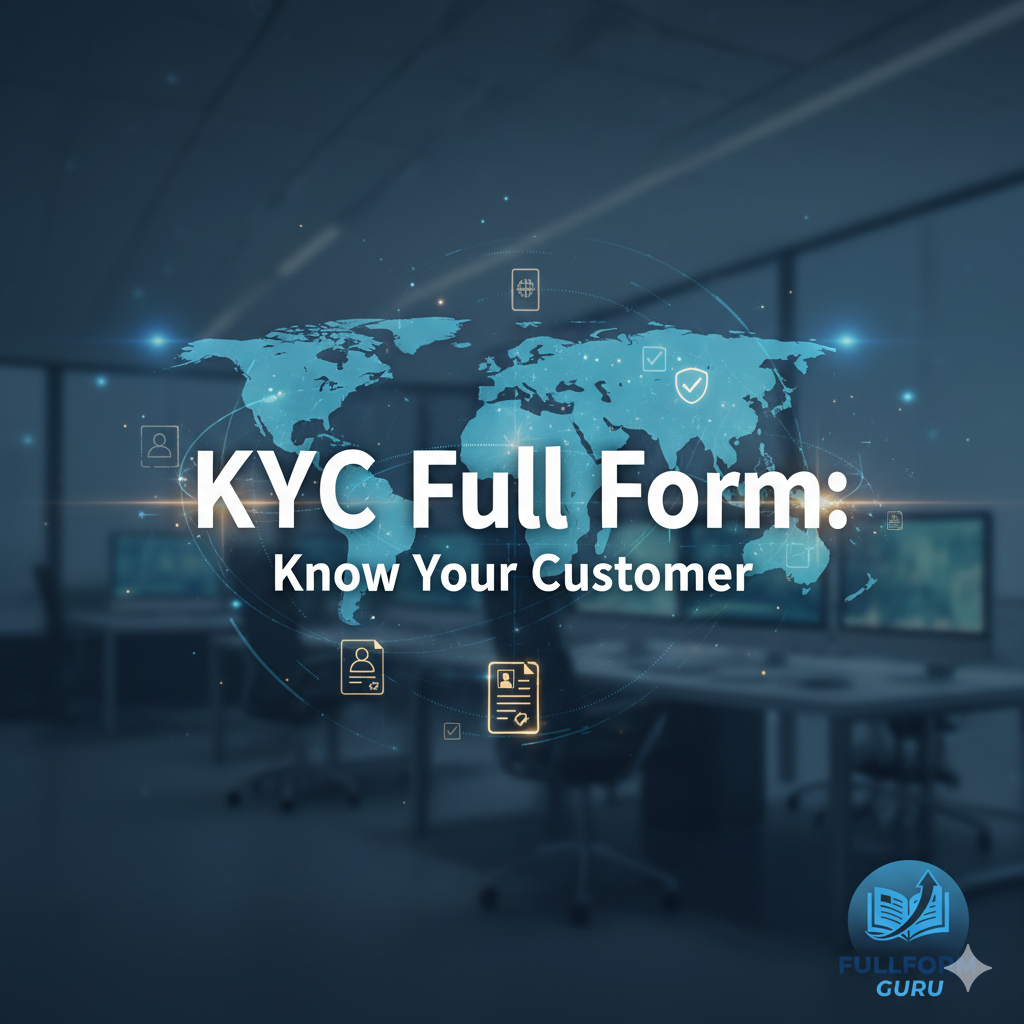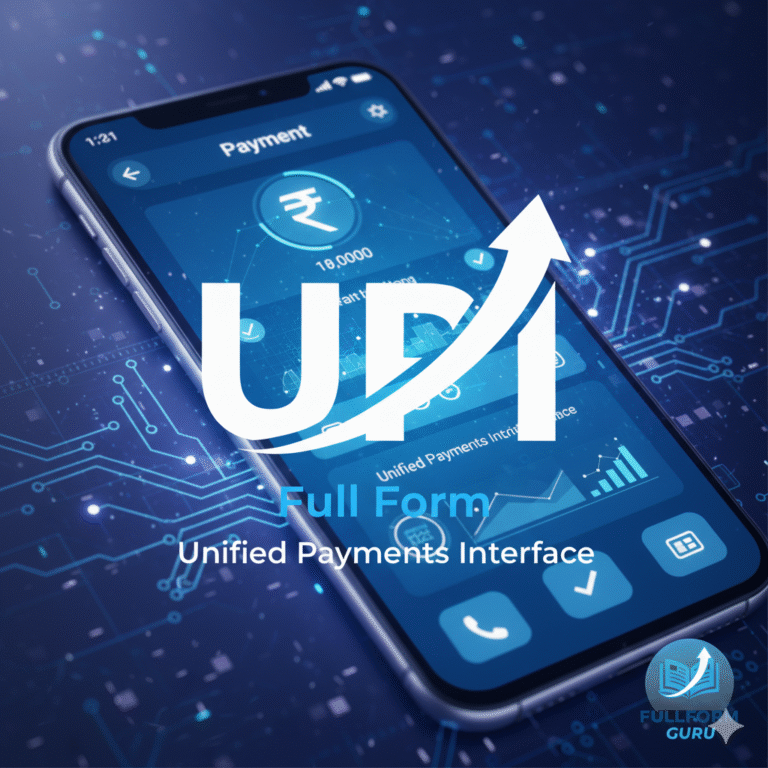KYC Full Form: Meaning, Process, Benefits, and How to Get Started

Introduction
KYC, or Know Your Customer, is a crucial process used by financial institutions, businesses, and service providers to verify the identity of their clients. It helps organizations prevent fraud, money laundering, and economic crimes while ensuring that customers are genuine. In today’s digital world, KYC is more important than ever, as it safeguards both businesses and individuals by creating a secure financial ecosystem. Understanding KYC is essential not only for professionals in banking or finance but also for anyone who wants to manage their finances safely and comply with global regulations.
KYC Full Form and Meaning
KYC stands for Know Your Customer. It is a standard process followed by banks, financial institutions, and other regulated organizations to verify the identity, address, and other relevant details of their clients. KYC Full Form is used to confirm that a person or business dealing with the institution is genuine and not involved in fraud or illegal activities. By collecting accurate information, organizations can reduce the risk of financial crimes, protect customer accounts, and maintain transparency in transactions.
Key elements of KYC include:
- Identity Verification: Using government-issued IDs or documents.
- Address Verification: Verifying the customer’s address.
- Risk Assessment: Determining the risk level of a customer for regulatory compliance.
How KYC Works (Step-by-Step)
KYC is a systematic process that ensures a customer’s identity and helps organizations comply with legal and regulatory standards. While procedures may vary slightly between countries or institutions, the basic steps remain the same:
- Document Collection
Customers submit proof of identity (like a passport, national ID, or driver’s license) and proof of address (utility bills, bank statements, or rental agreements).
- Verification
The organization verifies the authenticity of the submitted documents. It may involve cross-checking with government databases or official records.
- Customer Profiling
Based on the information provided, the institution creates a customer profile. They identify the risk level, account type, and any specific compliance rules.
- Approval
Once verified, the customer is approved to use the services, such as opening a bank account, investing in financial instruments, or trading stocks.
- Ongoing Monitoring
KYC is not a one-time process. Institutions continuously monitor accounts for suspicious activities, unusual transactions, or changes in customer information.
Example: A bank may request a scanned copy of a passport and a utility bill to verify the new account applicant. Once approved, the bank monitors transactions to detect unusual activity or potential fraud.

Types / Variants of KYC
KYC (Know Your Customer) is carried out using different methods, depending on the institution and purpose. Each type ensures proper identity verification without overlapping processes.
- In-Person KYC (IP-KYC)
- Physical verification of documents by visiting the bank, financial institution, or service provider.
- Commonly used for opening bank accounts, investment accounts, or government services.
- e-KYC (Electronic KYC)
- Verification through digital submission of ID documents and biometric authentication.
- Ideal for online account openings, digital wallets, and mobile banking.
- Video KYC (V-KYC)
- Conducted via a live video call with an authorized agent to verify identity.
- Gaining popularity for remote onboarding without visiting a branch.
- Simplified KYC (S-KYC)
- Low-risk or small-value accounts require just a few documents.
- Used for services like prepaid cards or small investment accounts.
- Hybrid KYC
- Combines in-person verification with digital methods.
- Ensures additional security for high-value accounts or sensitive financial transactions.
Who Should Consider KYC?
| Type of User | Why KYC is Important |
| Bank Customers | To open accounts, access loans, and use digital banking |
| Investors | To invest in stocks, mutual funds, and other instruments |
| Businesses / Corporates | For onboarding clients and regulatory compliance |
| Digital Wallet / Payment Users | To prevent fraud and secure transactions |
| High-Risk Customers | For monitoring and reducing potential financial crime |

How to Get Started with KYC
Getting started with KYC is simple and can usually be completed within a few days. First, gather your required documents, such as a government-issued ID (passport, national ID, or driver’s license) and proof of address (utility bill, bank statement, or rental agreement). Next, select the KYC method— in-person, e-KYC, video KYC Full Form, or hybrid—following your institution’s guidelines and your convenience. Submit your documents through the chosen method, ensuring that all information is accurate and up-to-date. After submission, the organization will verify your details, create a customer profile, and approve your account or services. Remember, KYC is not a one-time process; it may require updates periodically, especially if your personal information or risk profile changes.
Benefits / Advantages of KYC
KYC provides several key benefits for both customers and institutions. For customers, it ensures a secure financial environment, protecting accounts from fraud, identity theft, and unauthorized transactions. It also enables smoother access to services such as bank accounts, loans, investments, and digital wallets. For institutions, KYC Full Form helps maintain regulatory compliance, reduce the risk of money laundering or financial crimes, and build trust with clients. Overall, KYC promotes transparency, accountability, and safer transactions for everyone involved.
Comparison with Alternatives
| Feature | KYC (Know Your Customer) | Minimal Verification | Full Due Diligence (Enhanced KYC) |
| Purpose | Verify identity and prevent fraud | Quick access, limited checks | High-value accounts, high-risk clients |
| Documents Required | ID proof, address proof | Sometimes only ID or basic info | ID, address, income proof, source of funds |
| Process | Standardized and regulated | Simplified, faster | Detailed, multiple verifications |
| Risk Level | Low to medium | Low | Medium to high |
| Use Case | Banking, investments, online services | Prepaid cards, small transactions | Corporate accounts, high-value investments |
This table helps readers understand the different levels of verification and when each is appropriate.
How to Get Started with KYC
You can complete KYC smoothly by following these practical steps. Most financial institutions worldwide follow similar procedures:
- Collect Required Documents
- Valid government-issued ID (passport, national ID, driver’s license)
- Proof of address (utility bill, bank statement, rental agreement)
- Choose the KYC Method
- In-person KYC for physical branches
- e-KYC for online submissions
- Video KYC for remote verification
- Submit Documents
- Upload scanned copies for digital KYC
- Present originals if doing in-person verification
- Verification by the Institution
- The organization checks the authenticity of the documents
- Biometric checks or cross-referencing may take place
- Approval and Account Activation
- Once verified, your account or service access is approved
- You can start using banking, investment, or digital services securely
- Maintain Updated Information
- Keep your KYC details current to avoid service disruptions
- Notify the institution if there are changes in your address or ID
Conclusion
KYC Full Form (Know Your Customer) is more than a regulatory requirement—it is a key step in creating a secure and trustworthy financial ecosystem. By completing KYC accurately, customers protect their accounts from fraud, while institutions maintain transparency and compliance. Whether you are opening a bank account, investing, or using digital payment services, understanding and following KYC processes ensures smooth and safe financial transactions.
Start your KYC process today and stay informed. Remember, staying proactive protects your finances and helps you use financial services with confidence and care.







